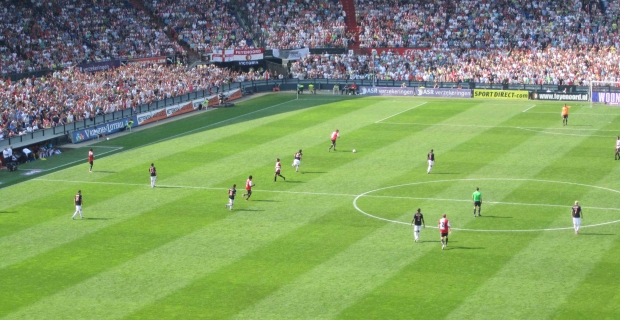Let me start by saying that I’m a huge soccer nut.
I play, I watch, and I read all the analysis. So naturally, I’ve loved the World Cup so far. Plenty of goals, drama, and even some big upsets. There’s also been some pretty impressive media statistics. According to FIFA, 11.1 million Americans watched the USA beat Ghana on ESPN, a World Cup record. Nearly 43 million Brazilians watched their match versus Croatia on Brazilian network TV Globo, making it the most watched event of the year. And on the digital side, the USA vs. Germany livestream on WatchESPN exceeded the Super Bowl as ESPN’s most streamed event ever. The huge popularity of the tournament is showing up on social media, as well. Even before the first kick of the tournament, there had been more social activity than any other event in history, including the entire 2010 World Cup.
So now that we’re two weeks into the tournament, the big question on the marketing side is how the top brands are performing. Looking at a couple numbers, Adidas’ top video has nearly 36 million views on YouTube, and rival Nike has nearly 83 million views. On Facebook, (at the time of writing) Adidas’ video only has 621 shares, compared to the 60,000+ shares that Nike has received. Based on these, it would be easy to say that Nike’s done a better job on social.
But many of these social statistics are similar to the statistics that are tracked in soccer. The number of shots, for example, is a popular statistic. Possession is another favorite. These two are sometimes correlated to the end result of the match, but often they’re not. The team with the most possession doesn’t win the game; the players still need to score the goals. When the USA played Ghana, Ghana out-possessed the USA, 59% - 41%, and out-shot the USA, 21 - 8. But we all know the final score.
Likewise, Nike and Adidas didn’t create these videos to collect likes and follows. They were created to convert on the real goals: increase brand favorability, introduce the new cleats, and seeing that both videos lead to websites that feature product, the videos were intended, ultimately, to sell.
Proof of true social success for these two brands will not be in views, likes, and follows. It will be evident at the local soccer fields, at the youth summer tournaments and as the fall seasons start. Will there be more neon Nike cleats or predator-spotted Adidas boots on the pitch?
These?
Or these?
As much as people in the social marketing world talk about the number of views or likes a video or a post gets, that’s not a real business outcome. Just like in soccer, these statistics are impressive and an easy method of benchmarking, but by themselves, they’re not meaningful. Ask anyone on the winning side of a soccer match, does having fewer shots take anything away from a victory? For Adidas and Nike, how many shoes or shirts they sell is real and meaningful.
If views and likes aren’t the right metrics, what can brands do to measure and improve how their efforts are leading to goals?
Just as the good soccer teams analyze game tape to see what kind of possession contributes to goals or what areas they should be trying to take shots from, there’s advanced social measurement tools that connect social efforts to conversions.
Social media is most powerful when it’s organic—when it’s the authentic conversations of people. By tracking the social activity that’s earned (the authentic conversations) through to conversions such as sales (the goals), brands will have a good game tape to study and learn from. For example, if a brand knows what social channel is naturally driving the most sales, they’ll be able to be more efficient in where they spend money and how they encourage sharing on that specific channel. If they know what people are most influential in their niche, they’ll know whom to target. And if they know what content is already converting organically, they’ll have a good idea of what content will work in the future.
It turns out social marketing is not too different from soccer. With great content (great players) and a strategy that uses the right metrics to measure and refine, brands can win the social marketing game.
For Adidas and Nike, the match is still going. But for social marketers who want to get better, do likes and follows result in more conversions? Does possession in your own half or shots from mid-field result in goals?
Need a coach for your social marketing team to help you measure and improve your social efforts? Check out our website at insidesocial.com and get a demo.



